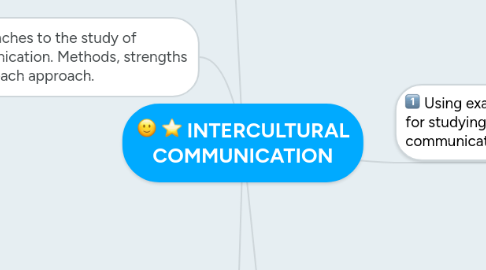
1. Describe how global and domestic economic conditions influence intercultural relations
1.1. Global and domestic economic conditions affect intercultural relations through the impact these have, since the internal and external diversity demands that companies are aware of changes that occur in cultures. As there is more diversity in economic conditions, companies are more interested in the capitalization of these to gain higher profits. At this point it will affect in the way we see the market or the customers.
1.2. Another way in which the economic conditions affect intercultural relations is through education and social classes, as some of the conflict may be related to the economic disparity that exists among these different groups. Being in different levels of social classes can result in having different points of view, which can lead to prejudice and stereotypes.
2. Explain how understanding intercultural communication can facilitate resolution of intercultural conflict; and how studying intercultural communication can lead to increased self-understanding
2.1. Intercultural communication can facilitate resolution of conflicts in the way that knowing about other cultures you can avoid misunderstanding , so you can practically avoid the develop of a problem.
2.2. It help to increase self-understanding, for the reasons that:
2.3. Intercultural communication help us to learn a lot of new information about other people and cultures, and also about ourselves and our cultural background. The study of intercultural communication start digging in other culture, acquiring new information about other ones, and ends making a research of their own culture, which increase their self-understanding too.
3. Describe 3 approaches to the study of intercultural communication. Methods, strengths and weaknesses of each approach.
3.1. The Social Science Approach: It is based on psychology and sociology studies.
3.1.1. Methods: it uses quantitative methods, using numerical indicators to ascertain the relationship between variables. It employs surveys and observations as means to gather data.
3.1.2. Strengths: it identifies variations in the communication between groups.
3.1.3. Weaknesses: It limits the study of communication processes between groups because it cannot identify all the variables affecting communication. Additionally, it can’t predict the success or failure of intercultural interactions. At last, the approach isn’t culturally sensitive.
3.2. The Interpretative Approach: It basically understands and describes human behaviors.
3.2.1. Methods: It employs sub-approaches like ethnography, to describe communication patterns within groups. The approach uses qualitative methods, which gather data from participant observations and field studies.
3.2.2. Strengths: it provides an in-depth understanding on communication patterns in particular communities because it emphasizes investigating communication in context.
3.2.3. Weaknesses: There are few interpretative studies of intercultural communication and researchers are often outsiders of the investigated places, thus there’s inaccuracy in their interpretations.
3.3. The Critical Approach: It includes many assumptions and subjectivism.
3.3.1. Methods: its preferred method is textual analyses.
3.3.2. Strengths: it emphasizes the power relations in intercultural interactions and the importance of social and historical contexts.
3.3.3. Weaknesses: it doesn’t focus on face-to-face interactions, which may yield less practical results. It doesn’t allow for much empirical data.
